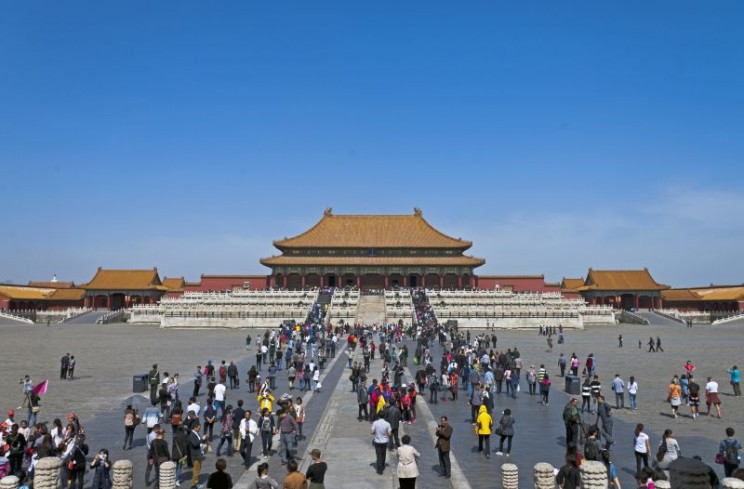China has all but overtaken the United States based on GDP at newly-computed purchasing power parity (PPP) exchange rates, twenty years after Paul Krugman predicted: “Although China is still a very poor country, its population is so huge that it will become a major economic power if it achieves even a fraction of Western productivity levels.” But will it eclipse the United States, as Arvind Subramanian has claimed, with the yuan eventually vying with the dollar for international reserve currency status?
Not unless China battles three economic foes. One is well-known: diminishing marginal returns to capital. Two others have received less attention. The first is Carlos Diaz-Alejandro. Not the man, but the results uncovered by his research on the Southern Cone following the opening up of its capital account that culminated in a sovereign debt crisis and contributed to Latin America’s lost 1980s. If the capital account is liberalized before the domestic financial system is ready, the country sets itself up for a fall: goodbye financial repression, hello financial crash. The second is the “reality of transition”: rejuvenating growth requires hard budgets and competition to improve resource allocation and stimulate innovation, counterbalanced with a more competitive real exchange rate. This is the principal insight from the transition in Central and Eastern Europe (CEE), which was far simpler than anything China faces.
China was able to raise total factor productivity (TFP) growth as an offset to diminishing marginal returns to capital, especially after joining the World Trade Organization (WTO) in 2001, and faster growth was accompanied by a rising savings rate. But TFP growth is hard to sustain. Any developing country targeting growth above the steady state level given by the sum of human capital growth, TFP growth and population growth (the latter two falling rapidly in China) will find that its investment rates need to continually increase unless it can rejuvenate TFP growth. China’s investment rates have risen from around 42% of GDP over 2005-7 (prior to the global crisis) to 48% in recent years even as growth has dropped from the 12% to the 7.5% range. Savings rates have hovered around 50%, reducing current account surpluses (numbers drawn from IMF 2010 and 2014 Article IV reports).

This configuration has forced China to choose between either investing even more, or lowering growth targets. It has chosen the latter, with its leaders espousing anti-corruption, deleveraging, environmental improvement and structural reform to achieve higher quality growth. The central bank, People’s Bank of China (PBoC), has reaffirmed its goal of internationalizing the yuan and liberalizing the capital account.
China’s proposed antidote is to “rebalance” from investment and exports to domestic consumption. But growth arithmetic would require consumption to grow at unrealistic rates, given the relative shares of investment and private consumption in GDP, even to meet scaled-down growth targets. Besides, households need better social benefits and market interest rates on bank deposits to save less and consume more. Hukou reform alone, or placing social benefits received by rural migrants on a par with their urban counterparts, could easily cost 3% of GDP a year for the next seven years as some 150 million additional people gain access to such benefits—quite apart from the public investment needed to upgrade urban infrastructure, according to calculations shared by Xinxin Li of the Observatory Group. And the failure to liberalize bank deposit rates has led to the rise of “wealth management products” in the shadow banking system. These “WMPs” offer higher returns but are poorly regulated and more risky.
Indeed, total social financing, a broad measure of credit, has soared from 125% to 200% of GDP over the five years 2009-2013 (Figure 2 in the July 2014 IMF Article IV report, with Box 5 warning that such a rapid trajectory usually ends in tears). Local government debt was estimated at 32% of GDP in mid-2013, much of it short-term and used to fund infrastructure projects and social housing with long paybacks. Housing prices show the signs of a bubble, especially away from the four major cities. Corporate credit is 115% of GDP, about half of it collateralized by land or property. While the focus recently has been on risks from shadow banking, it is hard to separate the shadow from the core. Besides, WMPs have become intertwined with the booming real estate market, a major engine of growth yet the centre of a “web of vulnerabilities” (to quote the IMF) encompassing banks, shadow banks, and local government finances. A real estate shock would ripple through the system, lowering growth and forcing bailouts. The gross cost of the bank workout at the end of the 1990s was 15% of GDP in a much simpler world!
2014 began with fears of a hard landing and an impending default by a bankrupt coal mine on a $500 million WMP-funded loan intermediated by a mega-bank. The government eventually intervened rather than let investors take a hit and risk a confidence crisis. And starting in April, stimulus packages were launched to meet the 7.5% growth target, a tacit admission that rebalancing is not working. But concerns persist around real estate. Besides, stimulus will help only temporarily and China is likely to be facing the same questions about growth and financial vulnerability by the end of the year.
With rebalancing infeasible, and investing even more prohibitively costly, virtually the only remaining option is to spur total factor productivity growth: China is still far from the global technological frontier. This calls for a package that cleans up the financial sector and implements hard budgets and genuine competition, especially for the state-owned enterprises (SOEs), while keeping real exchange rates competitive. The real appreciation of the past few years may have been offset by rising productivity, but continued appreciation will make it harder for the domestic economy to restructure and create 12 million jobs a year to absorb new graduates and displaced SOE workers.
In sum, China must heed Diaz-Alejandro. No one knows what the non-performing loans ratio is in China and few believe the official rate of 1%. If the cornerstone of a financial system is confidence and transparency, China is severely deficient. This must first be fixed and market-determined interest rates adopted before entertaining hopes of internationalizing the currency. China must also accept the reality of transition; the formidable remaining agenda in the fiscal, financial, social, and SOE sectors reminds us that China is still in transition to a full-fledged market economy.
The combination of a financial clean up and the policy trio of hard budgets, competition, and a competitive real exchange rate will improve resource allocation and force innovation, boosting total factor productivity growth. But doing this is hard—that’s the essence of the “middle-income trap”. Huge vested interests will be encountered, evoking Raghuram Rajan’s description of the middle-income trap as one “where crony capitalism creates oligarchies that slow down growth”. Dealing with this agenda is the Chinese leadership’s biggest challenge.
The era of cheap China is ending, while the ability of the government to virtually decree the growth rate has fallen victim to diminishing returns to capital. Diaz-Alejandro and the reality of transition are no less important as China seeks a way forward.
Headline image credit: The Great Wall in fall, by Canary Wu. CC-BY-SA-2.0 via Wikimedia Commons.
The post China’s economic foes appeared first on OUPblog.



